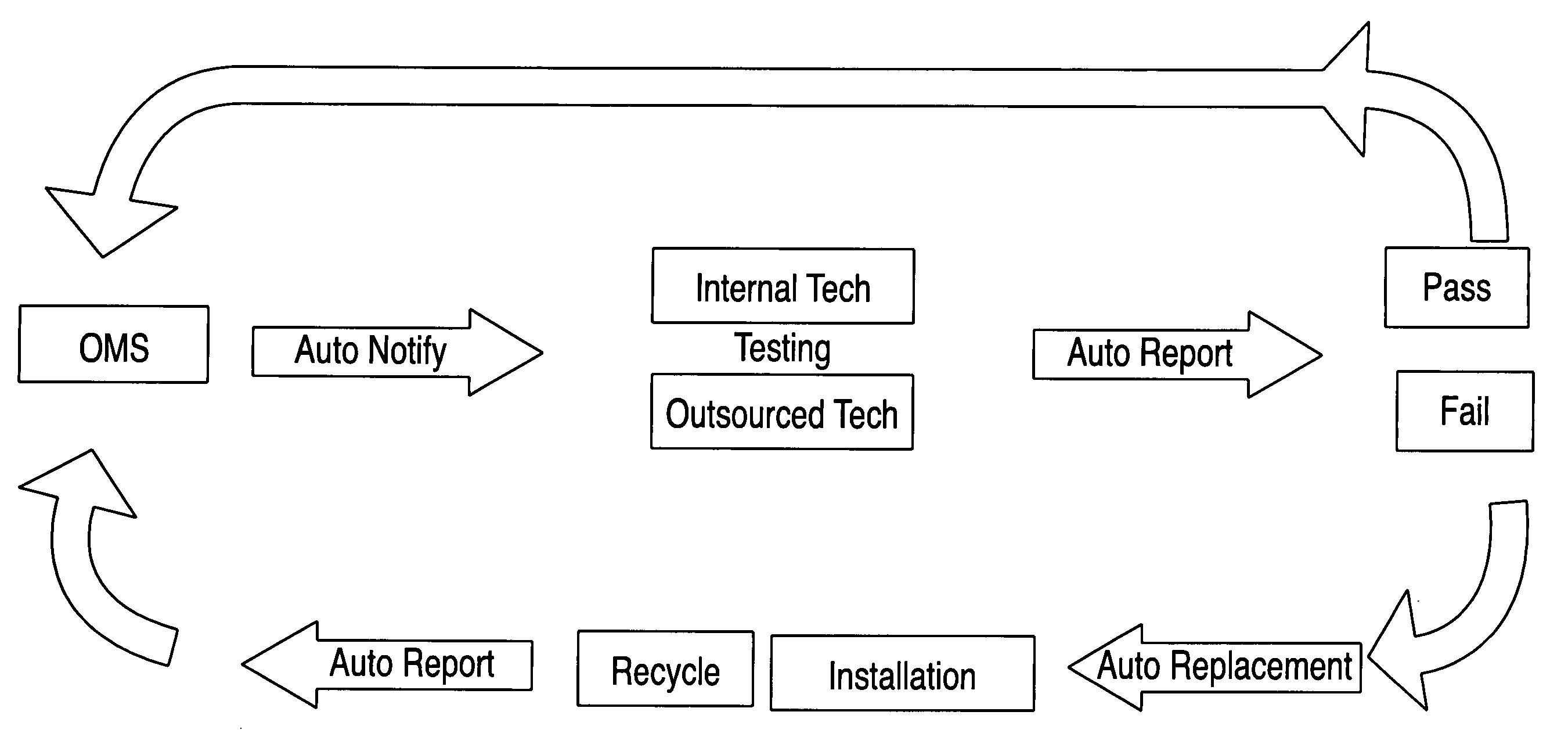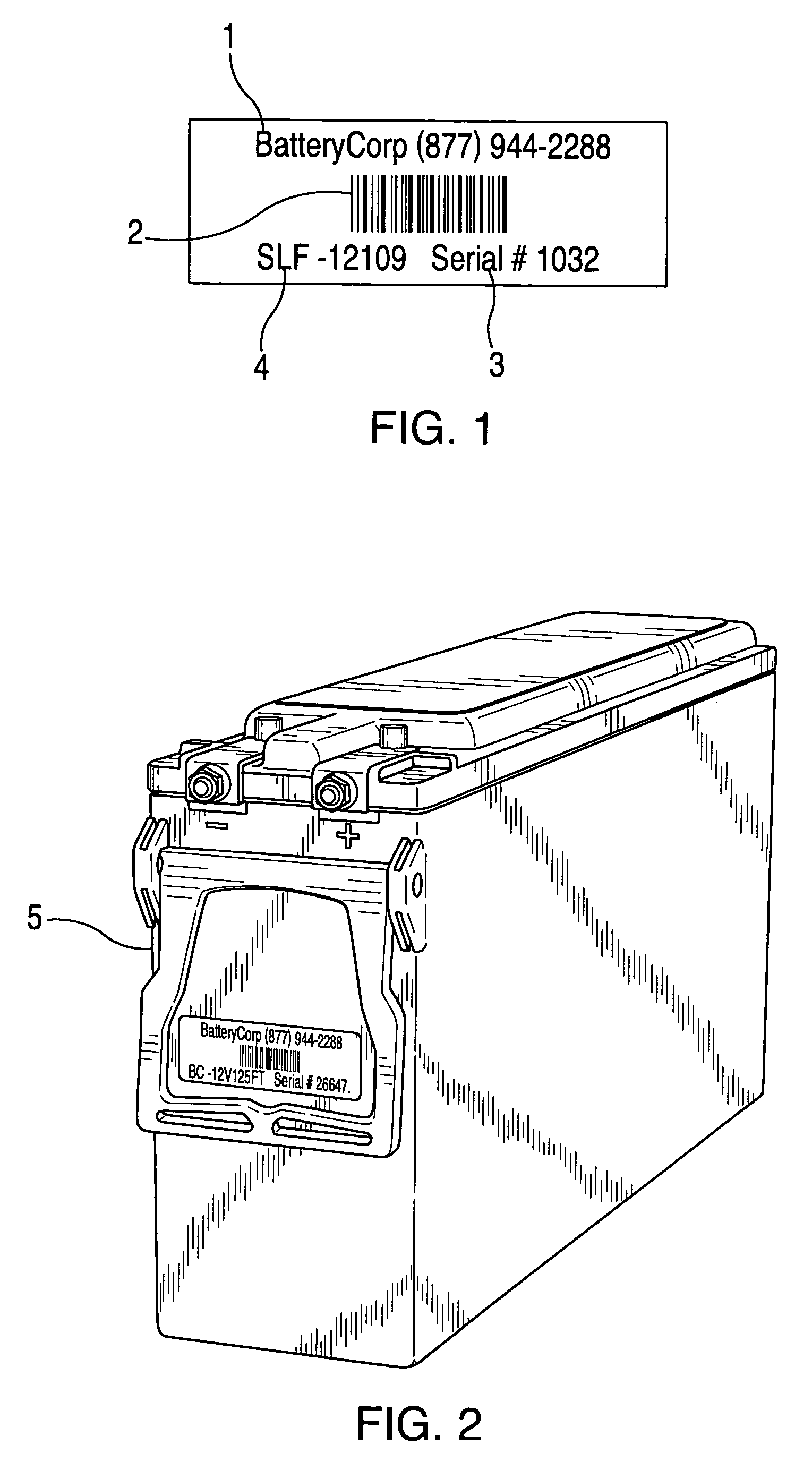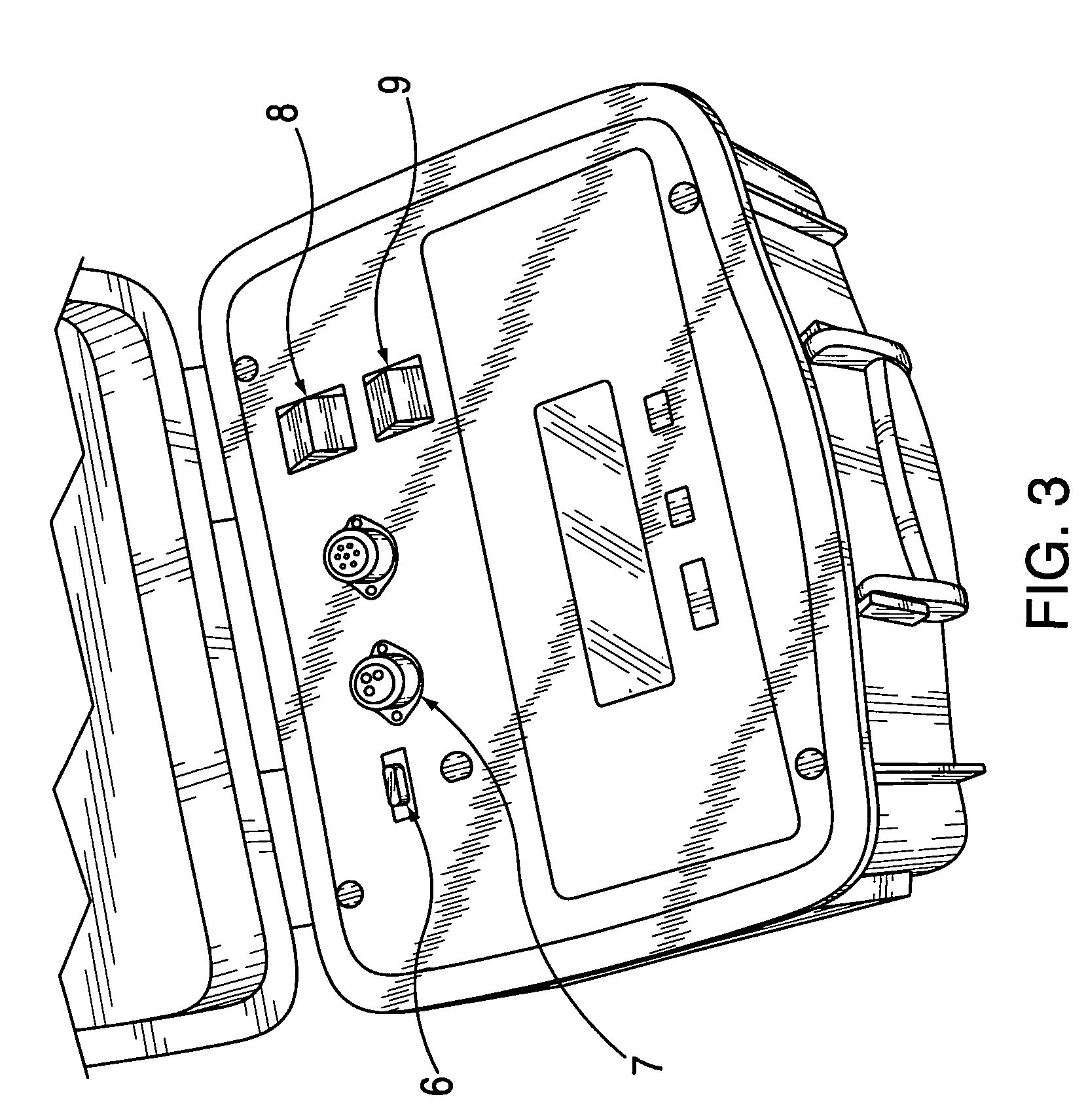Battery management system and apparatus with anomaly reporting
a technology of anomaly reporting and battery management system, which is applied in the field of large stationary battery management, can solve problems such as difficulties in managing, and achieve the effects of facilitating data transfer, easy management, and increasing voltage and output power
- Summary
- Abstract
- Description
- Claims
- Application Information
AI Technical Summary
Benefits of technology
Problems solved by technology
Method used
Image
Examples
Embodiment Construction
[0025]The invention provides and coordinates battery testing, maintenance, installation, fulfillment and disposal of batteries, and is capable of performing these functions over a wide geographical area. It seamlessly integrates these services via the BatteryCorp BC-T2000 tester and the OMS™ web based platform. This innovative solution helps companies improve their backup power systems while reducing costs.
[0026]FIG. 1 shows a preferred Mega-Tag to be associated with an individual battery. The tag is associated with a particular battery unit, so that the unique identification number embedded in the tag is consistently associated with that particular battery. Preferably to assure such continued association, the Mega-Tag is affixed to the exterior casing of the battery (5) with an adhesive, as shown in FIG. 2.
[0027]Mega-Tags are preferably bar coded labels that contain a unique identifier for the associated battery. The tag shown in FIG. 1 has, preferably, the following information: (...
PUM
| Property | Measurement | Unit |
|---|---|---|
| impedance | aaaaa | aaaaa |
| internal impedance | aaaaa | aaaaa |
| voltage | aaaaa | aaaaa |
Abstract
Description
Claims
Application Information
 Login to View More
Login to View More - R&D
- Intellectual Property
- Life Sciences
- Materials
- Tech Scout
- Unparalleled Data Quality
- Higher Quality Content
- 60% Fewer Hallucinations
Browse by: Latest US Patents, China's latest patents, Technical Efficacy Thesaurus, Application Domain, Technology Topic, Popular Technical Reports.
© 2025 PatSnap. All rights reserved.Legal|Privacy policy|Modern Slavery Act Transparency Statement|Sitemap|About US| Contact US: help@patsnap.com



